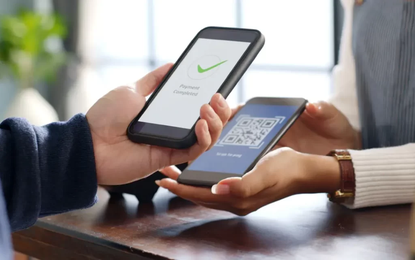

As QR codes become better known and more widely used, banks can leverage the technology not just for payments - but also for client acquisition
Social distancing measures have led to drastic changes in the finance and payment industry. One of the big beneficiaries has been the QR code, which is has grown in usage thanks to the fact that it is fast, secure and easy to use.
While these scannable squares may look a little like barcodes, they able to store much more data, which means that it can be used for linking to web pages, accessing documents, and identifying products and payments.
QR codes’ ability to be scanned allows them to be processed by a smartphone camera, making transactions fast and simple. And in finance, they are an important tool to facilitate instant payments, which have increased in demand in recent years.
There are two types of QR code: static and dynamic. The static one is characterized by having the payment link located directly inside, preventing that content from being altered.
Many countries use static QR codes to identify businesses through a taxpayer number and adding a target account. So, when the user captures the information, they know who is sending them the money and it is transferred from the payer’s account to that of the payment recipient.
By contrast, dynamic QR codes can be edited and at the same time offer different functions, such as scanning analysis, password protection, purchase amounts and information about the seller.
Beyond the technical attributes, there are high expectations surrounding the growth of QR code usage.
By next year, 51% of consumers worldwide will be more willing to use QR codes for payments, due to the fact that this transaction method is safer (72%) and more convenient (68%) for in-person payments, according to a study by Mastercard.
These forecasts suggest that the use of QR codes will grow substantially outside Asia, which to date has been a global hub for the technology. In the major cities in China, for example, 92% of people use scannable QR on their phones as the primary payment method.
In the context of the global pandemic, transactions with this type of technology accelerated. In the United States, QR code payments have increased by 11% since the onset of the crisis in early 2020, according to a report by Pymnts.
That is likely to be further accelerated by big tech moves. Facebook has started trying out QR codes to enable face-to-face payments through its application, for example. It is only a pilot for the US, but it highlights the possibility that a further major players might soon join the global trend too.
We’ve seen the rapid adoption of QR codes by financial institutions across the world recent years. And while facilitating digital payments is a key use for the technology, there are other applications for it in the banking industry.
One example is marketing and advertising. For financial institutions, QR codes are useful when it comes to creating a brand image or increasing app downloads. Canada’s TD Bank has used this strategy.
This bank uses QR codes in advertisements on bus stops in the United States to promote their branch locations. By scanning the code, users are redirected to the branch finder, allowing them to identify the nearest one.
Similarly, the technology can be used in marketing for other banking products, such as loans, for instance. In areas with heavy foot-traffic, such as shopping malls, banks can invite users can scan a QR code to be redirected to a sign up page, such as a mobile-optimized loan application form.
Overall, QR codes offer multiple, strong use cases for the financial industry by minimizing potential input errors that the user might make, as well as safeguarding clients’ and partners’ sensitive data.
What’s more, the technology doesn’t require high-cost infrastructure nor point-of-sale machines. What we have here is a new tool for sharing information that is revolutionizing digital processes.
Join our online community and stay up to date with the latest news from the world of technology.